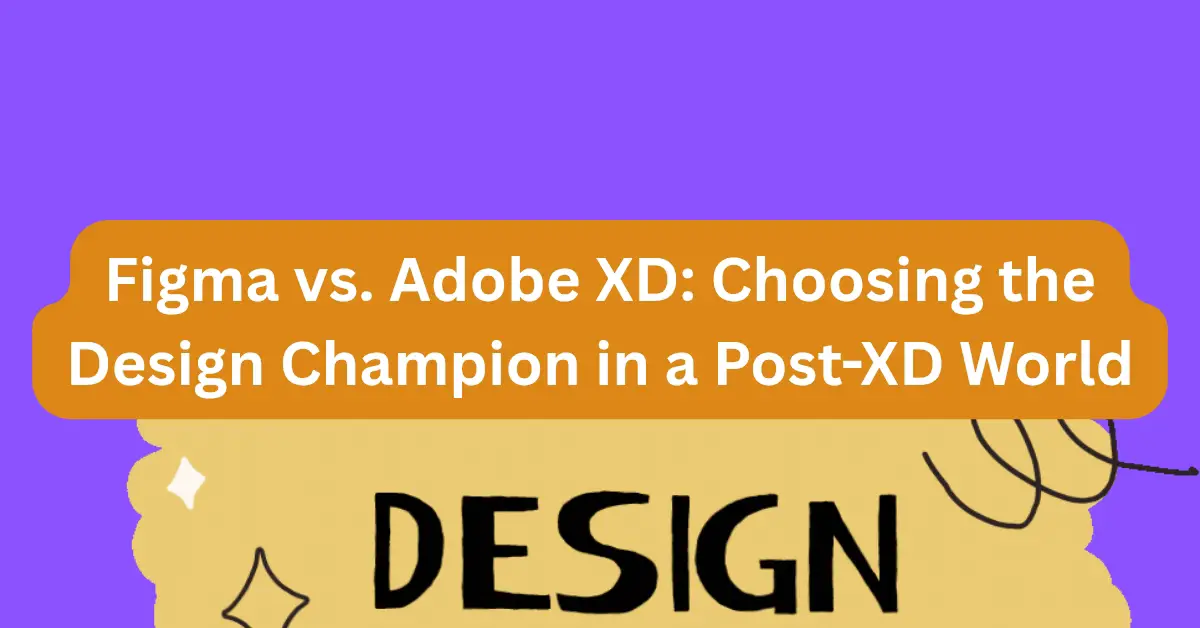The landscape of UI/UX design tools has seen seismic shifts. Once fierce competitors, Figma and Adobe XD now represent a clear choice driven by Adobe’s strategic pivot. Understanding their distinctions is crucial, especially since Adobe officially announced the end-of-life (EOL) for XD in late 2024.
Here’s a breakdown of their key differences, highlighting why Figma emerged as the dominant force:
1. Collaboration: The Core Differentiator
- Figma: Built natively for the web from the ground up, Figma pioneered real-time, multiplayer collaboration. Multiple designers, developers, and stakeholders can work simultaneously on the same file, seeing each other’s cursors, edits, and comments instantly. Comments are contextual, sticky, and resolve seamlessly. This is Figma’s killer feature, transforming design from a solitary activity into a truly collaborative, team-based process. Prototypes and design files are easily shareable via a simple link.
- Adobe XD: While XD introduced coediting features later (“Coediting”), it was fundamentally a desktop-first application retrofitted for collaboration. Coediting often felt less fluid, sometimes required saving and syncing, and didn’t achieve the effortless, browser-based synchronicity of Figma. Sharing prototypes was straightforward, but lacked the pervasive “always live” link nature of Figma.
2. Platform & Accessibility
- Figma:Browser-based (with optional desktop apps acting as shells). This means:
- Instant access: Anyone with a modern browser can view, comment, or even edit (with permissions) without installing software.
- OS Agnostic: Works flawlessly on Windows, macOS, ChromeOS, and Linux.
- Always Up-to-Date: Updates are deployed instantly to everyone.
- Adobe XD: Primarily a desktop application (Windows & macOS). While it had a web view for sharing prototypes, core design required installing the app. This created friction for quick reviews or involving non-designers directly in the file.
3. Performance & Offline Work
- Figma: Reliant on internet connectivity for full collaborative functionality. Offline work is possible with the desktop app, but syncing occurs upon reconnection. Performance is generally excellent but can be impacted by complex files or slow internet.
- Adobe XD: As a desktop app, it offered stronger offline capabilities and potentially faster raw performance for very large, complex files locally, independent of internet speed. This was a notable advantage for users with unreliable connections.
4. Design & Prototyping Features (Maturity & Focus)
- Both: Offered robust core vector editing, component systems (Symbols in XD, Components in Figma), auto-layout/constraints (Figma’s Auto Layout is generally considered more powerful and intuitive), prototyping with animations and transitions, and developer handoff tools.
- Figma: Evolved rapidly, driven by its collaborative foundation and strong community. Features like:
- Variants & Interactive Components: More advanced component states and interactions.
- Figma Community: A massive, vibrant marketplace for plugins, widgets, templates, and design systems.
- Dev Mode: A dedicated space for developers inspecting designs, grabbing code snippets (CSS, SwiftUI, etc.), and tracking changes.
- Advanced Prototyping: Often felt more fluid and integrated, leveraging its web-native core.
- Adobe XD: Integrated well within the Adobe Creative Cloud ecosystem (Photoshop, Illustrator, After Effects via plugins). Features like Repeat Grid were innovative for quickly populating lists/grids. Its voice prototyping was also unique. However, its pace of innovation in core UI/UX workflows often seemed slower than Figma’s post-2020.
5. Plugins & Ecosystem
- Figma: Boasts an unparalleled ecosystem via its open plugin API. The Figma Community is a treasure trove of free and paid plugins/widgets for icons, illustrations, accessibility checking, content generation, animations, and countless integrations (Jira, Slack, Google Sheets, etc.). This extensibility is a major strength.
- Adobe XD: Had a growing plugin ecosystem leveraging Adobe’s Creative Cloud developer base. While powerful for connecting to other Adobe apps and specific tasks, it never reached the sheer volume, diversity, or community engagement of Figma’s marketplace.
6. Pricing
- Figma: Offers a generous free Starter plan (3 Figma and 3 FigJam files, unlimited collaborators). Paid Professional and Organization plans unlock unlimited files, advanced collaboration features, Dev Mode, and design system management. Pricing scales with editors.
- Adobe XD: Was available as part of Adobe Creative Cloud subscriptions (single app or full suite). It lacked a meaningful permanent free tier (only limited trials). This put it at a disadvantage for freelancers, students, or small teams compared to Figma’s free offering.
7. The Future: XD’s Sunset
- Adobe XD: Development has ceased. Adobe officially announced its EOL. While existing installations might work for a while, no new features, security updates, or official support are coming. Adobe encourages migration to other Creative Cloud tools, though a direct Figma competitor hasn’t emerged from Adobe yet.
- Figma: Continues to be the dominant, actively developed platform in the collaborative UI/UX design space. Its roadmap focuses on enhancing collaboration, design systems, developer workflows, and AI integration.
Conclusion: Why Figma Won the Battle
The distinctions ultimately highlight why Figma became the industry standard:
- Web-First Collaboration: Figma fundamentally reimagined design as a real-time, collaborative team activity, breaking down silos.
- Accessibility & Low Friction: Instant access via browser lowered barriers to entry for contributors and stakeholders.
- Vibrant Ecosystem: The explosive growth of its plugin community provided immense value and customization.
- Aggressive Innovation: Figma consistently shipped features designers craved, directly addressing workflow pain points.
- Freemium Model: A powerful free tier fueled massive adoption, especially among individuals and startups.
While Adobe XD pioneered modern UI design tools alongside Sketch and offered deep Adobe integration, its desktop-centric model and slower adaptation to the cloud-collaboration paradigm proved decisive. For any team starting a new project or evaluating tools today, Figma is the unequivocal recommendation. Its collaborative power, accessibility, rich ecosystem, and active development make it the present and future leader. The distinctions now serve less as a comparison for choosing and more as a historical understanding of how the design tool landscape evolved to favor the cloud.
Arsalan Malik is a passionate Software Engineer and the Founder of Makemychance.com. A proud CDAC-qualified developer, Arsalan specializes in full-stack web development, with expertise in technologies like Node.js, PHP, WordPress, React, and modern CSS frameworks.
He actively shares his knowledge and insights with the developer community on platforms like Dev.to and engages with professionals worldwide through LinkedIn.
Arsalan believes in building real-world projects that not only solve problems but also educate and empower users. His mission is to make technology simple, accessible, and impactful for everyone.



